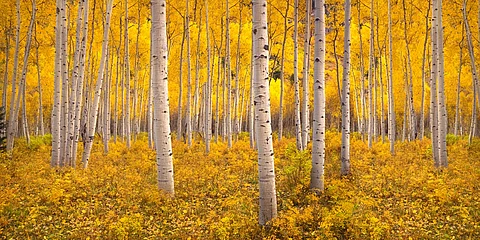

Insects and disease outbreaks have caused the US state of Colorado’s forests to transform from carbon sinks to carbon emitters in recent years, according to a new report.
Trees absorb carbon dioxide (CO2) in the atmosphere and mitigate warming of the planet by storing it in their trunks, branches, leaves and roots. Trees in forests arrest large proportions of CO2, creating a carbon reservoir.
“People are looking to our natural ecosystems to mitigate climate change,” said Tony Vorster, lead author of the report and a research scientist with the Natural Resource Ecology Laboratory, in a statement.
He added that Colorado’s forests should not be considered to be offsetting emissions as they are currently a statewide net carbon source. “That trend is probably going to continue with ongoing droughts and wildfires,” he said.
Vorster underlined that future reports would reflect Colorado’s forests as greater emitters of carbon than at the moment, as the severe wildfires reported in the month of January had not been accounted for.
Insect and disease outbreaks contributed to affecting almost a third of the state’s forests and amounting for nearly two-thirds of the carbon loss, along with other disturbances including climate change impacts.
The Colorado State Forest Service (CSFS) report has now found that 22.8 million acres of forest in the state held about 1,552 TgC (teragram) of carbon between 2010 and 2019. A teragram is one trillion grams or a million metric tons.
“The state’s forests were a net source of carbon, with forested land remaining forested emitting 0.9 TgC annually, based on plots first measured between 2002 to 2009 and remeasured from 2012 to 2019,” the report said.
The majority of the forest carbon — about 59 per cent — was stored in the live aboveground parts of trees. Twenty per cent was stored in the soil.
The emissions were attributed to the widespread tree mortality between 2002 and 2019, making it the largest carbon loss in aboveground live carbon stocks — amounting to about 3.8 TgC per year.
The tree mortality removed almost 8.5 TgC each year from the aboveground livepool, making it higher than what was being added i.e. 5 TgC per year, resulting it in becoming an overall carbon source.
Due to increased tree mortality, the amount of dead and downed woody material piled. “Insects and diseases affected much more area (about 2.5 million hectares) than other disturbances, causing 85 per cent of the total area impacted and 64 per cent of the disturbance-related carbon losses,” the report observed.
It noted that Colorado’s forests face insect and disease cycles along with wildfire, drought and impacts of climate change and human development.
“Colorado’s forests have seen large-scale insect infestations, such as Ips beetles (Ips sp.) impacts on pinyon pine (Pinus edulis), mountain pine beetle (Dendroctonus ponderosae) on lodgepole pine, spruce beetle (Dendroctonus rufipennis) on Engelmann spruce and western spruce budworm (Choristoneura freemani) across multiple species. Mountain pine beetle and spruce beetle alone have impacted over 20 per cent of Colorado’s forests since the turn of the century,” it said.
The infestation has led to loss of millions of acres of forest with standing and down dead wood.
The beetle-infested forests became vulnerable to frequent fires. Climate change and drought conditions only made matters worse, with warm dry weather and long wildfire seasons.
With increasing frequency of wildfires predicted owing to global warming, the report said, “There is high confidence in continued expected temperature increases, with lower confidence in expected precipitation changes, suggesting drought conditions and high evaporative demand will continue to interact with various forest disturbances for the foreseeable future.”
National Forest System or NFS lands, holding the largest forest area and carbon stock, recorded the highest carbon loss. They were followed by private lands, state and local government lands and other federal lands.
Carbon stocks and changes varied significantly across the four CSFS areas. Some forest types acted as carbon sinks in some regions but sources in others. The western CSFS regions had the most forest area and carbon stocks and experienced the greatest carbon losses.